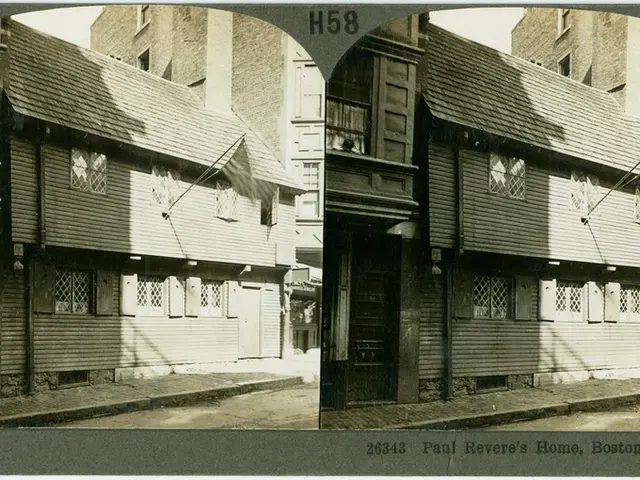Construction or Renovation Task List for Restaurants: A Guide for General Contractors
In the bustling world of restaurant construction and renovation, a comprehensive checklist is indispensable for general contractors. This valuable tool ensures all aspects of a build meet regulatory requirements, functional needs, and aesthetic goals, helping avoid costly mistakes and project delays.
Importance of a Restaurant Construction Checklist
A well-structured checklist offers numerous benefits:
- Ensuring compliance with building codes and food safety regulations: The checklist helps confirm that construction adheres to health, safety, and structural standards required for food facilities, such as ventilation, plumbing, and waste disposal systems.
- Supporting systematic project management: It organizes tasks from permitting, floor plans, to equipment installation, helping contractors manage timelines and budgets efficiently.
- Facilitating coordination among stakeholders: The checklist helps align contractors, designers, restaurant owners, and regulatory agencies, preventing miscommunication and ensuring a smooth workflow.
- Enhancing quality and functionality: By covering elements like kitchen layout, equipment, lighting, and sanitation areas, it secures optimal restaurant operation post-construction.
Key Components of a Restaurant Construction Checklist
The checklist includes various components that cover every aspect of the construction process:
| Component | Description | |--------------------------------|-----------------------------------------------------------------------------------------------| | Permits and Licenses | Securing necessary city and health permits required before and during construction. | | Floor Plan and Layout | Detailed plans for kitchen, dining, storage, and restrooms adjusted to restaurant workflow. | | Structural Requirements | Walls, floors, ceilings, doors, windows meeting health codes and durability standards. | | Food Protection Equipment | Installation of approved kitchen equipment and food prep areas ensuring hygiene. | | Waste Disposal Facilities | Proper refuse areas, grease traps, and sewage treatment systems to maintain cleanliness. | | Ventilation and Exhaust Systems | Adequate exhaust hoods and ductwork for kitchen fumes and odors. | | Water and Plumbing Systems | Installation ensuring clean water supply, backflow prevention, and drainage. | | Lighting and Electrical | Proper lighting for kitchen and dining areas, compliant with health regulations. | | Sanitation Facilities | Handwashing sinks, janitorial rooms, and changing areas for staff hygiene. | | Inspection and Final Approvals| Steps to schedule preliminary and final inspections with health and building authorities. |
In addition, the checklist addresses other crucial aspects like adhering to the Americans with Disabilities Act (ADA) guidelines, designing and laying out the restaurant for optimal traffic flow and ambiance, and ensuring proper site accessibility.
Overcoming Challenges in Restaurant Renovations
Despite the benefits of a checklist, challenges such as delays in obtaining permits, unexpected structural issues, design changes midway, budget overruns, and coordinating multiple contractors are common during restaurant renovations. To overcome these hurdles, researching building codes and regulations is a key component to integrate into the restaurant general contractor's checklist.
The Role of a Proficient Team
Hiring a proficient team of skilled contractors and specialists is essential. A comprehensive plan covering design, materials, budgeting, and contingencies should be developed. Prioritizing site accessibility right from the design stage, encompassing delivery access, waste disposal, and emergency services, is also crucial.
Achieving the Desired Ambiance and Functionality
Ensuring the interior design of a restaurant harmonizes with the desired cuisine and ambiance, including efficient kitchen layouts, comfortable seating arrangements, and tasteful decor elements, is essential. Sufficient lighting in both kitchen and dining areas is also necessary.
Budgeting and Timeline Management
Developing a budget and timeline is necessary to prevent cost overruns or delays, ensuring a realistic timeline with achievable milestones. This roadmap ensures that key elements such as permits, budgeting, design concepts, equipment installation, and safety regulations are all diligently addressed throughout the renovation process.
In conclusion, the restaurant construction checklist for general contractors is essential to ensure the facility is safe, compliant, functional, and ready for business. It covers permits, structural elements, equipment, sanitation, ventilation, and inspection processes in detail to guide successful project completion.
- Adopting a comprehensive checklist for restaurant renovation projects can help manage lifestyle factor, ensuring that the restaurant adheres to home-and-garden standards, providing a welcoming and aesthetically pleasing environment for customers.
- Beyond the kitchen and dining areas, considering food-and-drink aspects like a well-stocked bar and an appealing display of beverages and snacks can enhances the overall dining experience and contributes to a successful restaurant.
- For avid sports fans, incorporating live sports viewing options into the restaurant's design can attract a larger clientele, making shopping for sports merchandise a potential opportunity for the establishment.




